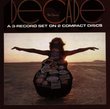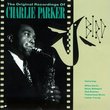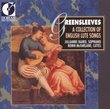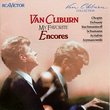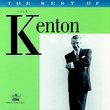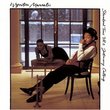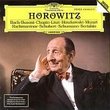| All Artists: Georg Philipp Telemann, Helmut Müller-Brühl, Cologne Chamber Orchestra Title: Telemann: Darmstadt Overtures (Suites) Members Wishing: 0 Total Copies: 0 Label: Naxos Release Date: 1/25/2000 Genre: Classical Styles: Forms & Genres, Suites, Historical Periods, Baroque (c.1600-1750), Symphonies Number of Discs: 1 SwapaCD Credits: 1 UPC: 636943424421 |
Search - Georg Philipp Telemann, Helmut Müller-Brühl, Cologne Chamber Orchestra :: Telemann: Darmstadt Overtures (Suites)
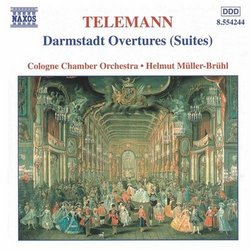 | Georg Philipp Telemann, Helmut Müller-Brühl, Cologne Chamber Orchestra Telemann: Darmstadt Overtures (Suites) Genre: Classical
|
Larger Image |
CD DetailsSimilarly Requested CDs
|
CD ReviewsNot great but quite pleasant suites for quiet listening F. Behrens | Keene, NH USA | 01/18/2000 (5 out of 5 stars) "As with Vivaldi to the south of him, Telemann was a bit too prolific (sometimes) for his own good. His very large output per se caused critics to downgrade all of his work; and frankly there does come a time as with most Baroque composers when a little does go a long way. With rare exceptions--as in his "Ebb and Flow" or "Don Quixote"--most of his works are hard to distinguish from those of other composers of his time. I for one listen to them as pleasant background music for dining or other quiet activities. But I am fond of "suites" (or, most confusingly, "overtures" as they were called back then), which are nothing more than a series of dance movements: menuet, gigue, bouree, and so on. Three very entertaining examples of Telemann suites have been offered us by Naxos on the CD called < Darmstadt Overtures> (8.554244), played by the Cologne Chamber Orchestra under Helmut Muller-Bruhl. Historically they are interesting in that they show how Telemann chose not to follow the pattern set down by Lully, but worked with the Italian breeziness and the German contrapuntal tradition to make the form very much his own. The three suites included here are in G minor, C and D; and they are all scored for 3 oboes, bassoon, strings, and basso continuo. As if to explain the use of "overture" as synonymous for "suite," the first movements are called overtures and are in the French tradition of grave-allegro-grave. At the Naxos bargain price, a very nice little choice for your next purchase." Counterpoint to stereotyped and outdated criticism by Behren Frank T. Manheim | Fairfax VA | 01/27/2007 (5 out of 5 stars) "F. Behrens repeats a criticism often heard in the past: that Georg Philipp Telemann diluted his output by "writing too much". That idea, dropped by an obscure early 19th Century critic and mindlessly repeated until recently, has increasingly receded with the rollout of editions of Telemann compositions since World War II. Many have appeared for the first time in the publications of the Telemann Archiv, formerly in Kassel Germany, and now in Telemann's home town of Magdeburg. In recent decades we've heard for the first time T's late choral orchestral works. These demonstrate startling originality and continuing innovation in form and style even in his 80's (e.g. Day of Judgment, around 1762). I admit I had no high opinion of T. in my early music training. Little duets and chamber pieces suited for beginning recorder students were the only works I'd heard. A breakthrough for me came when the late great radio music host, Robert J. Lurtsema, at Boston's WGBH radio presented all availble recordings of Telemann compositions for the 300th anniversary of his birth in 1681. I was astounded to her the variety and unique qualities in Telemann's compositions. Many times I was late to work because I couldn't bear to leave Lurtsema's Morning Pro Musica while he was playing a new Telemann work. I learned that Telemann was "the boss" in contemporary eyes in high baroque Germany. He was also an admirable man in many respects. He was a democrat by philosophy and the first in Germany to open the aristocratic collegium musica concerts to the public in Leipzig (while still a student). He was the first classical composer to incorporate authentic folk music (Polish Hanaka) in "concert music" - in much the same way Joseph Haydn later did with Hungarian gypsy music. Next was discovery of Telemann's unlimited imagination in terms of concocting new forms and instrumental combinations, and harmonic and rhythmic variety. He was the first to develop the quartet form, and used it for a variety of instruments. T. played all the instruments of the then orchestra and exhibited an unmatched gift for exploiting instrumental sonorities - something one of the reviewers mentioned in her comments. Thus, for example, in addition to the wild Polish folk dance n the last movement of the Concerto for Flute and Recorder in E, Telemann utilized and contrasted the special character of flute and recorder in this fine concerto. He was the first to capture the special qualities of the low register of the clarinet (chalumeau) in the dark and brooding opening of the Concerto for Two Clarinets, and even coupled two double basses with a piccolo in the solo instrument group for his "Cricket Symphony" Comparisons with Bach? Early in his career Telemann rejected what he called formalism, e.g. the strict counterpoint which J.S. Bach developed to its highest level in music. Instead, he brought orchestral counterpoint, or simultaneous use of instrumental color and melodic interactions, to a level never before seen. This is a feature that I find immediately distinguishes T. from other baroque composers, namely that in his hands, the orchestra, or different parts of it interact on even level with the soloists in concerti. But there's a potential pitfall in contemporary authentic instrument performance of Telemann. He was a "pre"romantic, who revelled in emotions, mood, and subtle harmonic, melodic and rhythmic shifts. Performances that are too focused on stylistic issues and ornamentation can make Telemann sound like just any other baroque work. The recent trends to loosen up emotional expression in baroque performance promises to reveal new values in Telemann works that didn't come forth to full efect in the past decades. Incidentally, this is less of a problem with Bach works, because of the importance of his contrapuntal motives, as contrasted with shades of mood and emotion and dynamics in Telemann. I realize that I may not reach many of the previous viewers - or even Behrens - with this commentary, but felt that I should try to create a better balance of information about a composer who has been regaining his proper appreciation in recent decades." Absolutely Divine M. S. Tucker | Los Angeles, CA USA | 10/10/2001 (5 out of 5 stars) "I had been searching for a baroque CD which would come as close as possible to the soundtrack for Restoration (which was original composition as well as Purcell). I found it incredibly difficult to find suites that capture the aristocratic feel as well as a rich baroque flare. Jean-Baptiste Lully came mighty close as well as some Purcell CD's I purchased. I had heard of Telemann but was not really familiar with his style and had heard him compared to Vivaldi, which for me is sort of baroque lite.I went ahead, closed my eyes and added this CD to my cart. Out of three other classical/baroque purchases, including the new Yo-Yo Ma, "Simply Baroque II" (which is beautiful), my breath was taken away at the first listen of this. I cannot express how stunning the arrangements are!If you are looking for sweeping baroque suites that have an ability to catapult you into the world of baroque, this is for you. If you prefer more "traditional" classical style, stick with Vivaldi."
|

 Track Listings (23) - Disc #1
Track Listings (23) - Disc #1